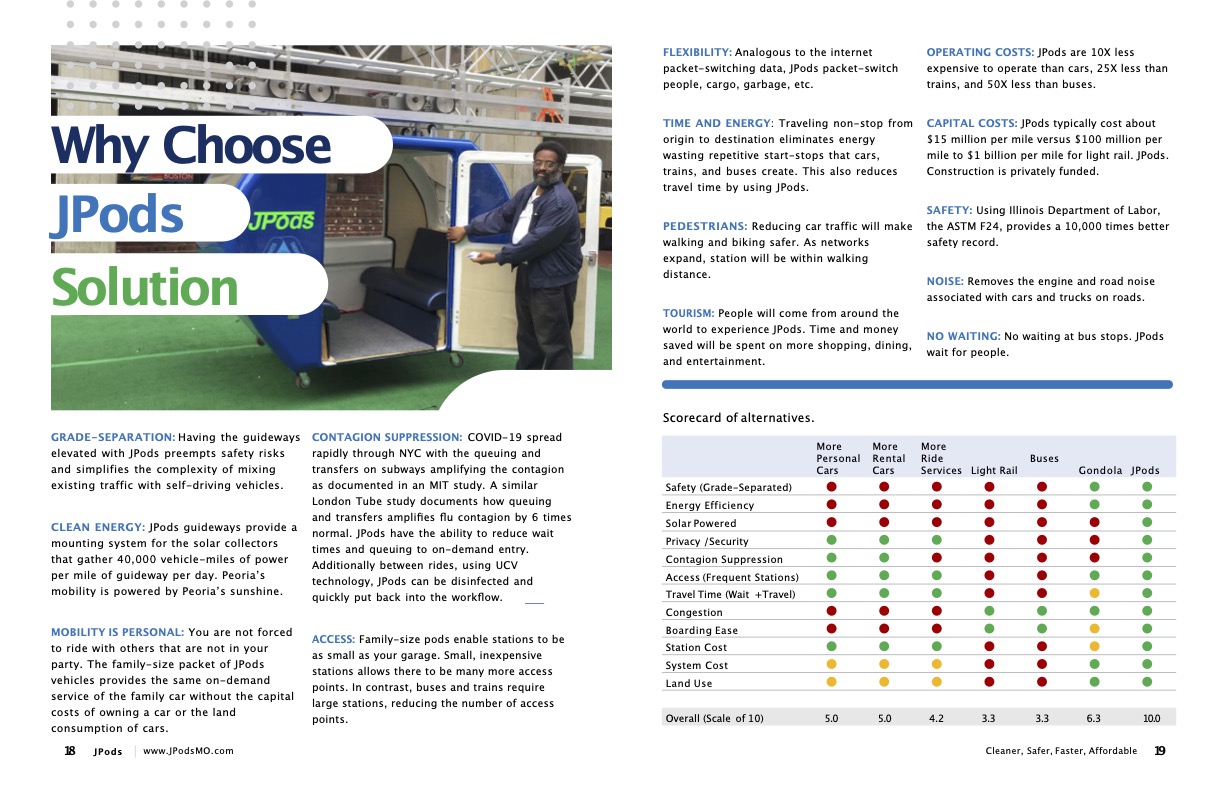2026 World Cup Network
Objective: Make Kansas City the model of a walkable, sustainable city in time for the 2026 World Cup.
Accomplishing this task requires JPods to invest about $3 billion dollars into Kansas City infrastructure. It requires hiring and training a workforce and building an industrial base (FTA estimate of job-years). It requires using that crew and base to build the networks. Link to a one-page summary.
Required Action:
- Sign the 5X5 Standard MOU so JPods can begin risking our capital while the City passes the Franchise Agreement (modeled after the franchise agreements used in communications and power networks) that will allow capital to invest in networks in Kansas City.
- City adopt the Franchise Agreement so capital will fund construction of the Kansas City networks.
- To create the jobs, train crews, build the manufacturing base, and deploy networks to meet a need in 2026 is an enormous task that must be started immediately to be effective by 2026.
Three Phase Approach to make traveling in Kansas City’s World Cup games a delight.
Phase 1: Kitty Hawk Network™. A short 170 meter network that provides a (same network JPods is building in Baghdad):
- Maintenance Facility as the network expands.
- Experience so planners and engineers can gain experience into how to expand the network.
- An attractive location for expansion at the airport is near the KCI Expo Center.



Phase 2: Based on experience gained, expand the network to connect the airport economic community.
Phase 3: Based on experience, expand the network from the airport and into Kansas City. The following Route-Time™ is intended to provide a rough estimate of travel times if a Mesh Network™ is built in Kansas City. JPods invented solar powered mobility networks (Patent 6,810,817) to implement the concept of the Physical Internet®. This Physical Internet will have overlapping networks just as the Internet does:
- High speed, heavy lift of the Internet is provided by fiber optics. Airplanes and freight railroads provide this capability in the Physical Internet.
- Local Area Networks of the Internet is provided by WiFi. JPods provide commuter range transport of people and cargo in the Physical Internet.
- Last Device of the Internet is BlueTooth. Bikes, walking, scooter, Local Use Vehicles (golf carts), ride-hail, etc… provide the Last Mile transport.
Key features of the JPods network for Kansas City:
- Cleaner, 100% solar-powered. Support walking and biking.
- Faster. Non-stop from origin to destination is quicker that cars most of the time. 24×7 availability eliminates waiting for Mass Transit.
- Safer. Grade-separated preempt crashes. Compliance with theme park standards requires a 3,000 times safety improvement. Preempt risks of crimes by not riding with strangers or waiting at bus stops.
- Affordable. Equity provided by on-demand mobility regardless of age, ability, or wealth. No requirement to borrow $30,000 to buy a car.
- No cost of deployment or operation carried by the tax payers. JPods networks are privately funded.
- New source of revenue for governments from the 5% of gross transportation revenues paid for non-exclusive used of airspace over public Rights of Way.
Features to make Kansas City standout during the World Cup:
- Service in people’s native own language:
- Your phone app and/or the on-board computer is your interface, in your own language.
- Phone and computer support is available in your own language.
- Ability to pay through your phone in your own currency.
- Eliminating risks of travel during celebrations from distraction or impairment.
Background
Commerce and Community are Pedestrian
Only 1.2% of land area in the 35 largest US cities are walkable land and generate 20% of GDP.
JPods grade-separated networks safety support walking and biking.
UnWalkable Cities
In 1972 the US, Sweden and Denmark had the same per person oil consumption and pedestrian safety record. Following the 1973 Oil Embargo:
- US policies continue sprawl.
- Sweden and Denmark changed highway-centric policies to focus on more walkable and bikeable streets. Per person oil consumption was cut to 60% below the US. Pedestrian and bike rider kill-rates were cut to 400% below US policies.
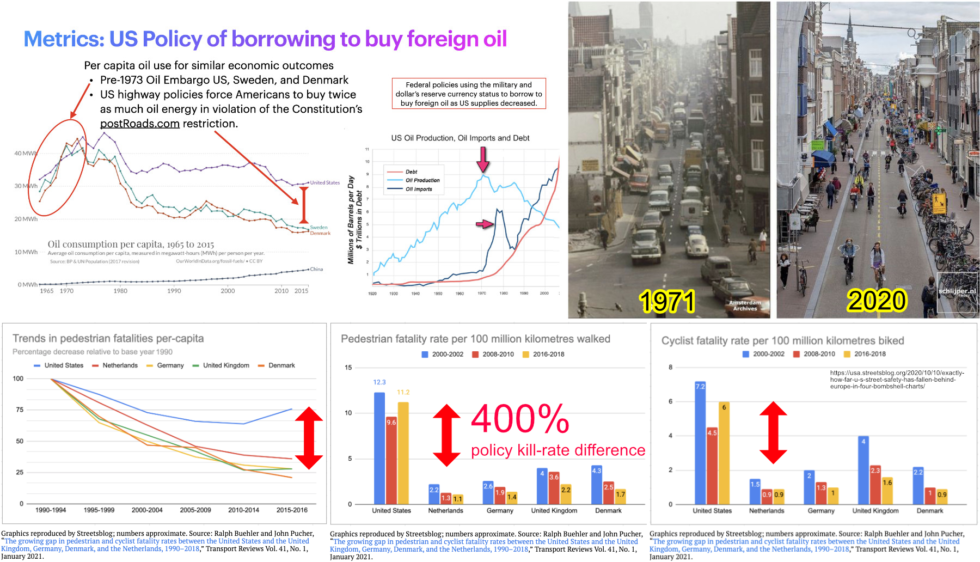
Building on the success of Morgantown PRT:
Create a walkable city. In the half century of operation, Morgantown’s PRT cause zero reportable injuries. 2.4 million people are seriously injured on highways per year.
Grade-control of freight railroads allows them to achieve 470 ton-mpg efficiency. Grade-separation of JPods and other PRT networks enables approaching freight railroad efficiencies and achieve the 3,000 times better safety record of theme park thrill rides over highways.
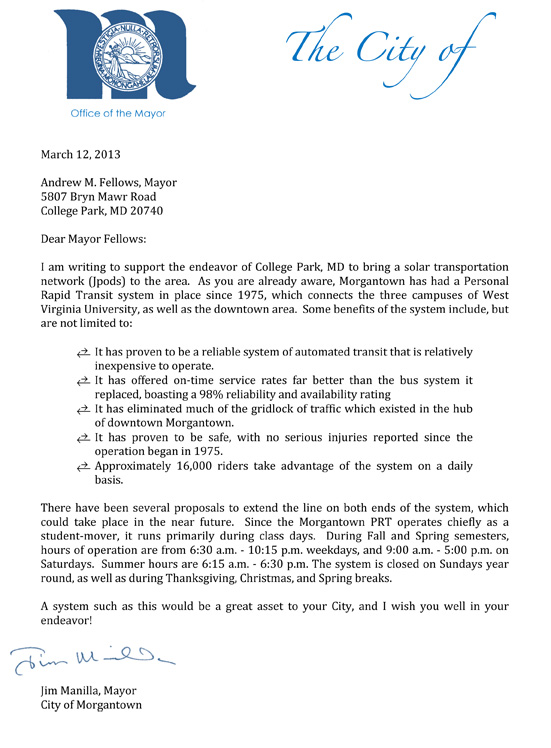
Congressional Study, Automated Guideway Transit, 1975

This study was published to identify solutions to the 1973 Oil Embargo. Finding were that government “institutional failures” blocked Automated Guideway Transit innovations for “four to six decades (aside from some relatively minor cosmetic changes)… Compared with many other areas of entrepreneurial endeavor, the environment for innovation in transportation should be favorable. Urban transportation needs are extensive… In retrospect, the new systems efforts have served not to stimulate interest in new technology but to discourage already reluctant local transit operators from considering it.”
“Proponents of PRT view this concept as a reasonable supplement to the private automobile in high density urban areas and claim that PRT can provide a very much higher level of service than other modes of public transportation. Thus, it is argued that PRT systems would attract a significant percentage of the rides now being made in private automobiles and offer obvious benefits:
- less traffic congestion in urban areas.
- less land and fewer facilities used for automobile storage. . reduced travel time under more comfortable Circumstance. . less noise and air pollution.
- reduction in consumption of petroleum-derived fuels.
- reduction in requirements for new arterial roads and urban freeways.
It is contended that PRT would provide greater mobility for the transportation disadvantaged, i.e., the young, the elderly, the poor, and the handicapped.”
Attempts by New Jersey’s Legislature to break these “institutional failures”
- “c. It is in the State’s economic interest to investigate new types of service which may improve the usefulness and integration of existing platforms, provide fast, inexpensive travel options, reduce capital costs of projects, and reduce pollution from motor vehicle travel. Personal Rapid Transit (hereinafter “PRT”) is one such technology currently being made available.”
- “d. According to the Federal Transit Administration, average capital cost per two-way mile for heavy rail is $150 million, and for light rail is $70 million. For operating cost per passenger mile: heavy rail is $1.20, light rail is $1.80. However, PRT has the potential to cost 37 much less than heavy and light-rail applications, carry high capacity, be flexibly located, and require much less physical “footprint,” potentially reducing easement impact for currently scheduled projects. PRT studies have shown a capital cost of about one-tenth the cost of existing rail technology, with similarly low operating costs.”
- New Jersey Legislature Study by BAH 070515 Associated TRB slidedeck.
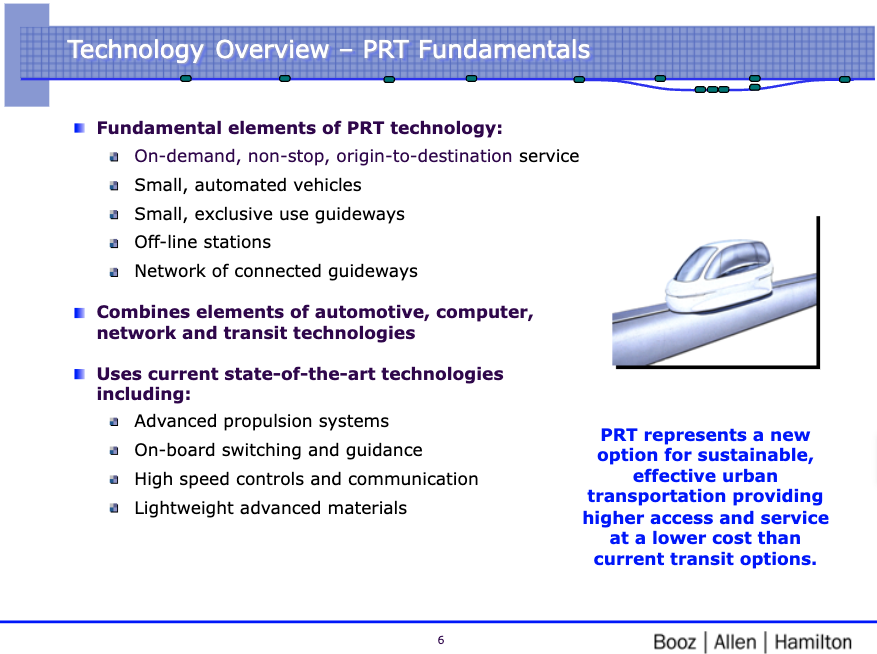
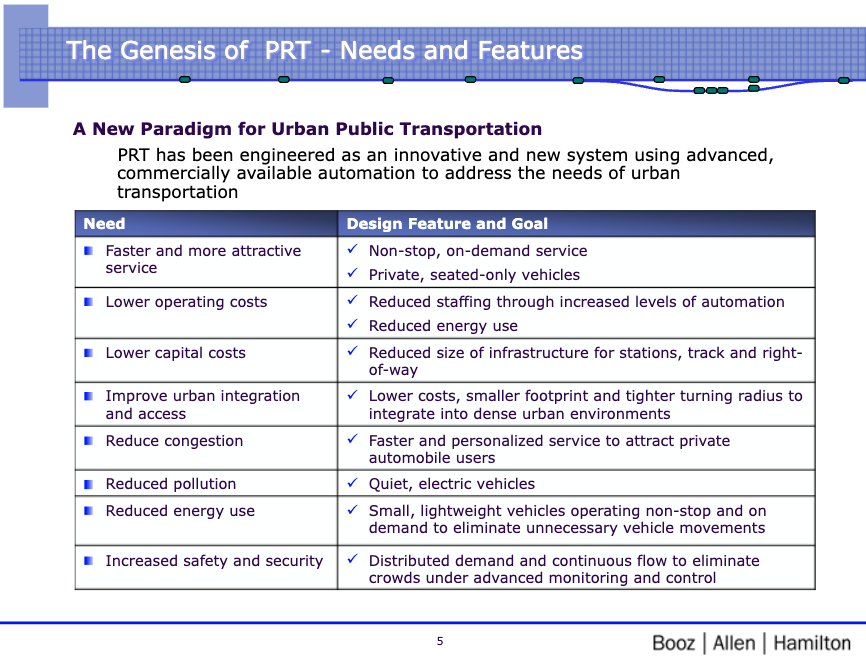
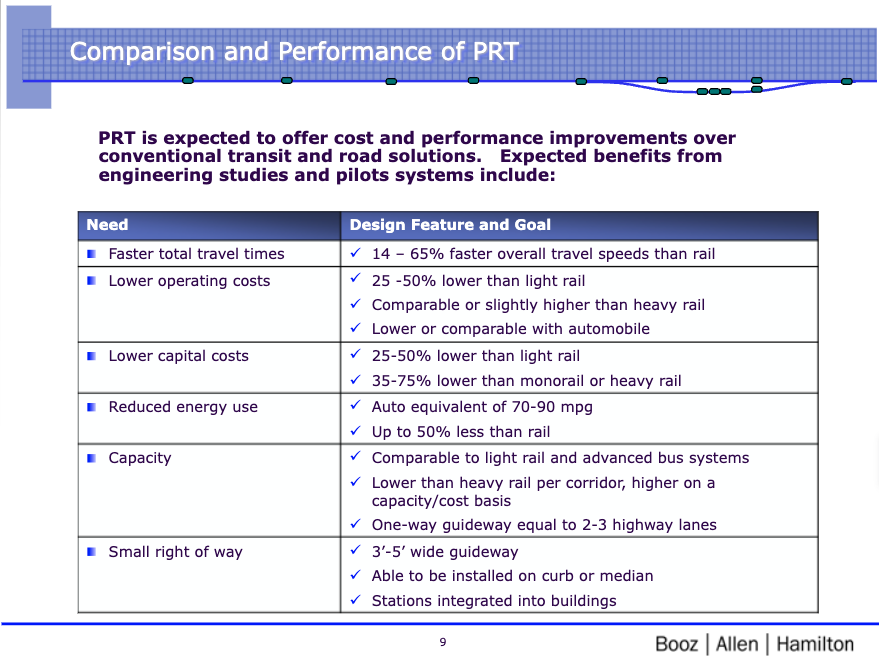

Vote by North Central Texas Coalition of Governments, breaking “institutional failures”
End of Affordable Oil
Without action, it seems the oil price crisis of 2008 will repeat by 2026:
- 85% of 153 oil executives agreed with the Dallas Federal Reserve survey question: “Do you expect a significant tightening of the oil market by the end of 2024, given the current underinvestment in exploration?”
- Cited comment: “Shale core exhaustion and inventory concerns are mainstream and well-documented issues. Shale will likely tip over in five years, and U.S. production will be down 20 to 30 percent quickly. When it does—this feels like watching the steam roller scene in Austin Powers. Oil prices in the late 2020s will be something to behold.”
- Background article.
Each car costs a family about $9,282, is parked 95% of the time with ~85% of car costs leave the local economy. 2.24 cars per household (278.06 million cars, 124.01 million households)
North Dakota Governor on Strong Towns
Summary of JPods Experience:




